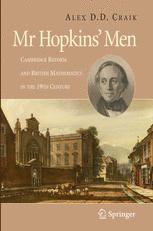

Most ebook files are in PDF format, so you can easily read them using various software such as Foxit Reader or directly on the Google Chrome browser.
Some ebook files are released by publishers in other formats such as .awz, .mobi, .epub, .fb2, etc. You may need to install specific software to read these formats on mobile/PC, such as Calibre.
Please read the tutorial at this link: https://ebookbell.com/faq
We offer FREE conversion to the popular formats you request; however, this may take some time. Therefore, right after payment, please email us, and we will try to provide the service as quickly as possible.
For some exceptional file formats or broken links (if any), please refrain from opening any disputes. Instead, email us first, and we will try to assist within a maximum of 6 hours.
EbookBell Team

5.0
20 reviewsThe 19th century was a key period in the development of the mathematical sciences in Britain. Subjects such as rigid-body dynamics, hydrodynamics, elasticity, optics, heat, electricity and magnetism were extended and given firmer foundations; new areas of pure mathematics were explored; and major advances took place in statistics, astronomy, geology and glaciology.
The mid-19th century also brought dramatic changes to Cambridge University. Before 1850, the only pathway to an honours degree was the Mathematical Tripos - taken by all aspiring students whatever their destined careers - and the best teaching was provided by private tutors, the most renowned being the remarkable William Hopkins.
This wide-ranging book tells the story of Hopkins and the education and subsequent careers of his top "wranglers", many of whom went on to have illustrious careers as bishops, judges, politicians, scientists or educators. It draws on first-hand accounts of life at Cambridge to give the reader a glimpse inside its colleges, and it charts the evolution of the curriculum and the slow, often reluctant, reforms that led to Cambridge’s dominance of British higher education. It surveys the scientific achievements of the time and considers the disproportionate contributions made by Scottish and Irish alumni in establishing a research community. Gradually, Cambridge was transformed from a near-moribund institution into a world-renowned centre for the mathematical and physical sciences.
Many famous scientists and mathematicians are profiled, among them G. Green, G.G. Stokes, J.C. Adams, W. Thomson (Lord Kelvin), A. Cayley and J.C. Maxwell, and many lesser-known figures too, including the first professors in Australia and the tutor to an Indian maharajah. In addition, and as a special highlight, Hopkins’ own collection of portraits of his top students, attributed to the artist T.C. Wageman, are published here – in colour – for the first time.
Scholarly yet non-technical, this is a fascinating look at Cambridge during the Victorian era that is accessible to anyone with an interest in the history of science and mathematics; the history of education; the interaction of science and religious belief; the history of Cambridge University; and Victorian Britain generally.
Alex D.D. Craik is a graduate of St Andrews and Cambridge. For many years, he taught applied mathematics at St Andrews University, where he is presently an emeritus professor.